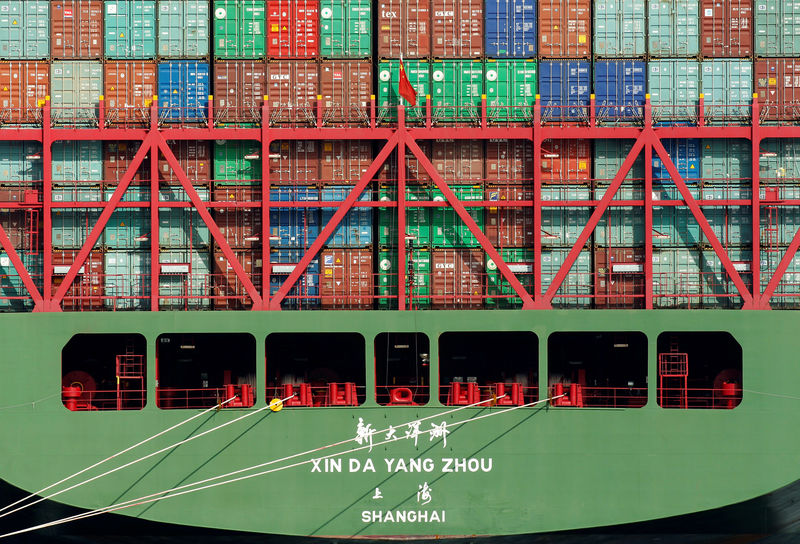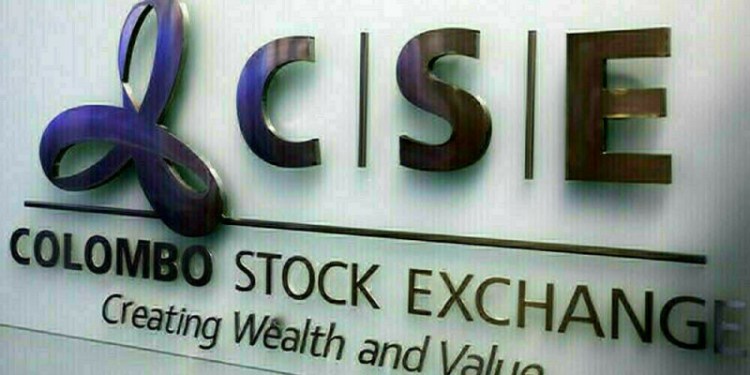 © Reuters. FILE PHOTO: China Shipping containers sit on a ship in the Port of Los Angeles after being imported to the U.S.
© Reuters. FILE PHOTO: China Shipping containers sit on a ship in the Port of Los Angeles after being imported to the U.S.By Shrutee Sarkar
BENGALURU (Reuters) – The U.S. economy will expand at a robust pace in coming quarters but slow to 2 percent by the end of 2019, according to forecasters polled by Reuters who unanimously said the escalating trade war with China was bad economic policy.
In a sign the trade war is not likely to end any time soon, President Donald Trump on Monday imposed a 10 percent tariff on about $200 billion worth of Chinese imports and threatened duties on around $267 billion more if Beijing retaliates, which it has.
In the meantime, the U.S. economy was forecast to grow at an annualized pace of 3.1 percent this quarter, up slightly from 3.0 percent forecast last month, followed by 2.8 percent in the fourth quarter, according to the latest poll.
All 70 economists who answered an additional question in the Sept 12-19 survey said the trade conflict between the world’s top two economies is bad for U.S. growth, posing downside risks to what is otherwise an upbeat outlook for the near-term.
“Absolutely — it is a bad policy and definitely negative. But it is not bad enough to throw us into a recession, unless it translates to a big negative for confidence and sentiment,” said Jim O’Sullivan, chief economist at High Frequency Economics.
“It’s kind of like – we have nothing to fear, but we should,” O’Sullivan said, trying to describe the delicate situation.
A decade after U.S. investment bank Lehman Brothers collapsed, triggering a devastating financial crisis, the U.S. economic recovery has been unusually lengthy.
Growth is on a solid footing, at least for the near-term, juiced by aggressive tax cuts passed late last year. And a strong labor market underpins the Federal Reserve’s plans to raise interest rates further this year and next.
The dollar has surged this year as well and Wall Street is trading near record highs, as many emerging market assets have buckled and retreated.
“The trigger point for the pain is really hard to predict – the stock market has a lot of momentum and optimism but if we keep raising tariffs then it will cause a correction,” said Ethan Harris, head of global economics at BofAML.
“It feels like we are in a transition period where the trade war is going from being a minor irritant to a concern, and eventually it will start to impact investment plans.”
The latest Reuters consensus for U.S. growth showed slight upgrades for several quarters in the coming year but still is forecasting a slowdown to 2.0 percent in the final quarter of 2019, less than half the last reported rate of 4.2 percent.
The median probability for a recession in the next year held at just 15 percent. But it increases to 35 percent over the next two years, with the most pessimistic call at 75 percent.
“Despite tariffs, emerging market gyrations and political drama in Washington, there seems to be no stopping the American economy in the near-term. Boosted by fiscal stimulus, economic growth is expected to top the G7 in 2018,” noted James Orlando, senior economist at TD Securities.
“(But) as the fiscal sugar rush fades, economic growth is expected to moderate…risks from trade tensions and uncertainty around the path of fiscal policy clouds the outlook farther out on the horizon.”
The Trump administration’s aggressive tax cuts have already pushed the government’s budget deficit higher by almost a third so far in the current fiscal year compared to the same period one year ago.
Expectations for inflation and the Fed’s rate path were largely unchanged from last month.
All 113 economists polled forecast the Fed to hike rates when it meets Sept 25-26. It is expected to follow that up with one more before the end of this year, taking the fed funds rate to 2.25-2.50 percent.
But medians showed only two hikes next year, compared to three increases based on the Fed’s own dot plots.
When asked what could bring the next recession closer, about three-fifths of 68 respondents said faster Fed rates hikes than what are currently expected was the top worry.
Over 20 percent of respondents listed the trade war as the top reason why the next U.S. economic downturn might be brought closer. Remaining responses were varied, including a significant correction in stock markets and a further dollar rise.
(Other stories from Reuters long-term economic outlook polls:)
(Analysis and polling by Manjul Paul and Indradip Ghosh; Editing by Ross Finley and Chizu Nomiyama)
Source: Investing.com



























